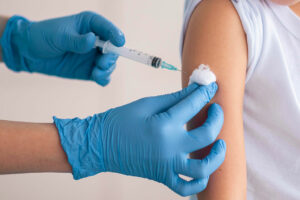PHL to start P7.9-B vaccine program
THE PHILIPPINE government will conduct a P7.9-billion catch-up immunization program that seeks to vaccinate elementary students against measles, rubella, tetanus, diphtheria, and human papillomavirus infection. The catch-up vaccination program, which covers Grade 1 to 7 students, will start on Oct. 7 and will be held every Friday during the month, Health Secretary Teodoro J. Herbosa […]

THE PHILIPPINE government will conduct a P7.9-billion catch-up immunization program that seeks to vaccinate elementary students against measles, rubella, tetanus, diphtheria, and human papillomavirus infection.
The catch-up vaccination program, which covers Grade 1 to 7 students, will start on Oct. 7 and will be held every Friday during the month, Health Secretary Teodoro J. Herbosa said at a news briefing on Tuesday.
He said Grade 4 female students will receive anti-cervical cancer vaccines.
Students in private schools would be allowed to get vaccinated in public schools, he said, noting that private schools only need to have tie-ups with them.
Mr. Herbosa said the catch-up plan is part of the Department of Health’s national immunization program, which seeks to give out a total of 11 vaccines for babies from birth to about 12 months of age.
The routine immunization for children, according to UNICEF Philippines, includes the BCG vaccine against tuberculosis, the Hepatitis B vaccine; the pentavalent vaccine against diphtheria, pertussis, tetanus, haemophilus influenzae type b and hepatitis B.
These also include the oral polio vaccine and the inactivated polio vaccine; the PCV vaccine against pneumonia and meningitis; and the vaccine against measles, mumps and rubella.
Mr. Herbosa said the number of fully immunized children was low or that the immunization rate was “decreasing” largely due to school disruptions caused by the COVID-19 pandemic.
“Due to COVID-19, there were no classes, no school-age vaccination,” he said in Filipino. “Many children missed out on the needed vaccines.”
Health workers during the pandemic were also focused on giving out COVID-19 vaccines, he added.
He said the rate of fully immunized children in the country was at 71%, adding that Central Visayas in central Philippines and the Bangsamoro region in the country’s south were among the laggards.
Logistics issues remain a major obstacle to the delivery of vaccines, he said. — Kyle Aristophere T. Atienza












